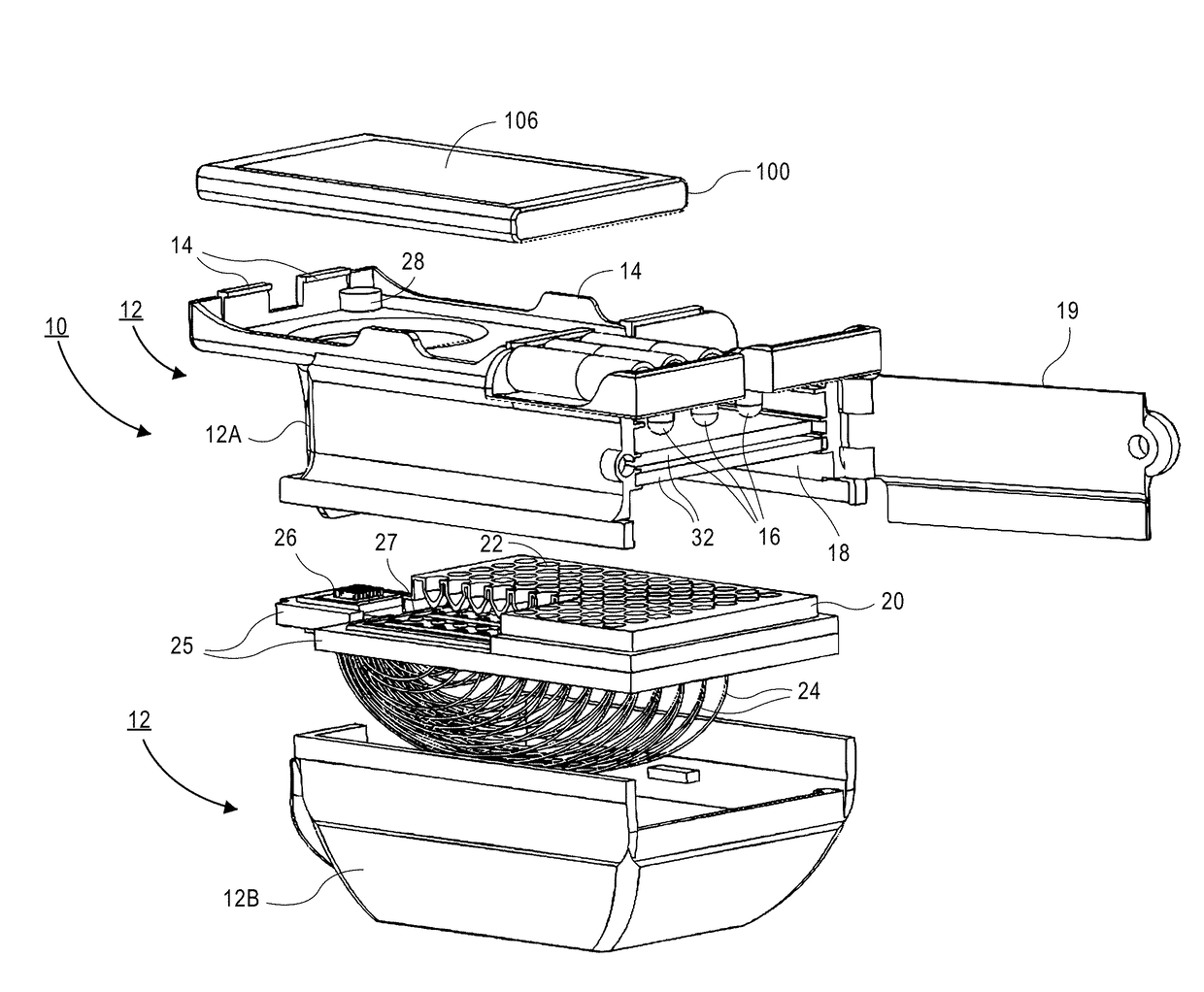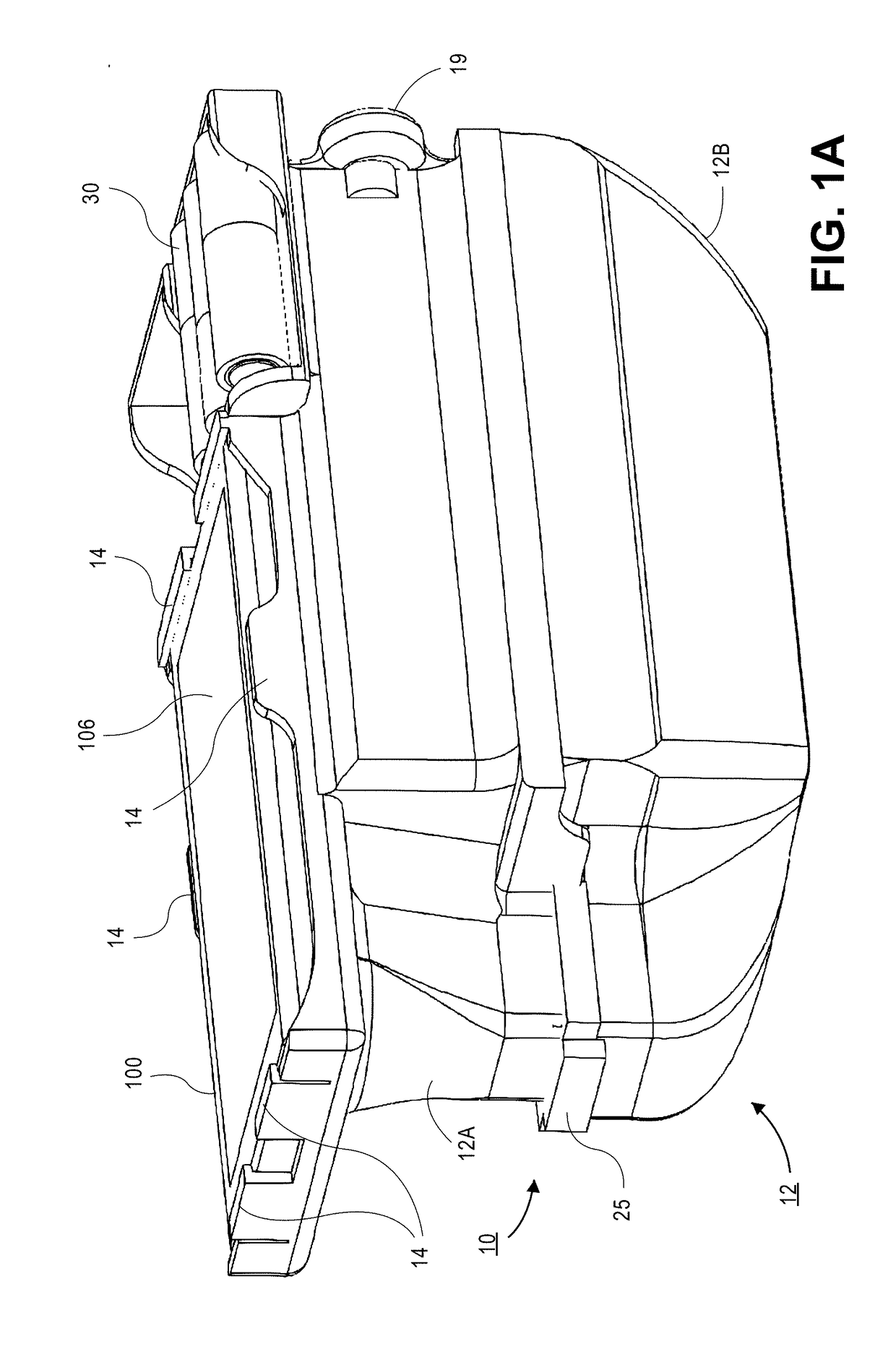Micro-plate reader for elisa testing
a micro-plate reader and elisa technology, applied in the field of portable diagnostic testing devices, can solve the problems of large-scale screening of populations based on lfa tests, high cost and time-consuming, and simple testing methods have some inherent weaknesses
- Summary
- Abstract
- Description
- Claims
- Application Information
AI Technical Summary
Benefits of technology
Problems solved by technology
Method used
Image
Examples
Embodiment Construction
[0029]FIGS. 1A-1C illustrates an embodiment of the micro-plate reader 10 for use with a portable electronic device 100 having a camera 102 (FIG. 1E) therein. In this example, the portable electronic device 100 is a mobile phone or cell phone although the portable electronic device 100 may also include other portable electronic devices with a camera 102. These include, for example, tablet PCs, webcams, and digital cameras. The micro-plate reader 10 is, in one particular embodiment, portable and is hand-held (either with one or both hands depending on portable electronic device 100 being used). In one aspect of the invention, the portable electronic device 100 also has wireless functionality such that images and data may be transferred to a remote computer or server as explained herein. Wireless functionality may occur over a WiFi network that is connected to the Internet. Alternatively, wireless functionality may be provided on a mobile phone network. Bluetooth wireless transfer may ...
PUM
 Login to View More
Login to View More Abstract
Description
Claims
Application Information
 Login to View More
Login to View More - R&D
- Intellectual Property
- Life Sciences
- Materials
- Tech Scout
- Unparalleled Data Quality
- Higher Quality Content
- 60% Fewer Hallucinations
Browse by: Latest US Patents, China's latest patents, Technical Efficacy Thesaurus, Application Domain, Technology Topic, Popular Technical Reports.
© 2025 PatSnap. All rights reserved.Legal|Privacy policy|Modern Slavery Act Transparency Statement|Sitemap|About US| Contact US: help@patsnap.com



